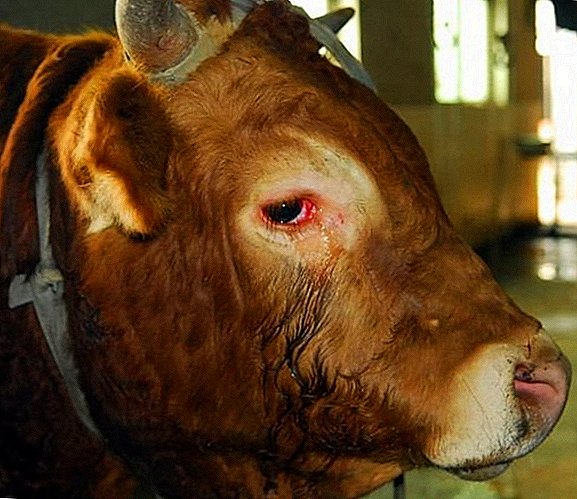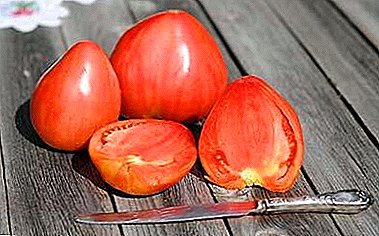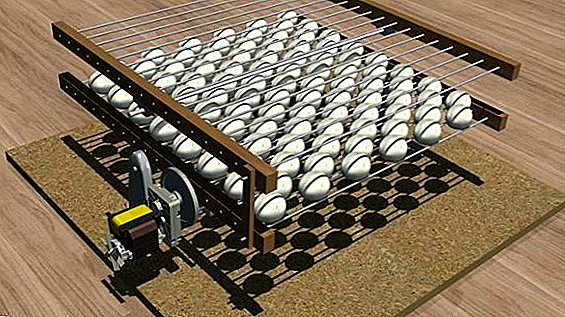 Laying eggs in an incubator, each house wants to get a healthy brood of chickens. But for this it is not enough to buy or make a good incubator with your own hands, equipped with the necessary heating, cooling, ventilation and humidification systems. It turns out that the eggs need to pay attention every day, or rather roll them over. The frequency of daily coups depends on the day of laying and on the type of hatching bird. We will discuss why this should be done, how often and how to build a homemade turning mechanism.
Laying eggs in an incubator, each house wants to get a healthy brood of chickens. But for this it is not enough to buy or make a good incubator with your own hands, equipped with the necessary heating, cooling, ventilation and humidification systems. It turns out that the eggs need to pay attention every day, or rather roll them over. The frequency of daily coups depends on the day of laying and on the type of hatching bird. We will discuss why this should be done, how often and how to build a homemade turning mechanism.
Why turn the eggs in an incubator
The hatcher, in effect, replaces the hen in order to get as many chicks as possible. In order for the operation to be successful, the incubation material in the device must be in the same conditions as under the chicken. Therefore, it maintains the same temperature. In addition, it is necessary that the eggs turned over, because so does the feathered mother.
We recommend poultry farmers to consider all the details of making an incubator for eggs with their own hands, and in particular from the refrigerator.
The bird does it instinctively, not knowing all the processes occurring inside the shell. The poultry farmer needs to understand this in order to provide egg laying in his incubator with conditions as close as possible to the natural ones. 
Reasons for turning eggs:
- uniform heating of the egg from all sides, which contributes to the timely appearance of a healthy chicken;
- preventing the embryo from sticking to the shell and gluing its developing organs;
- optimal use of protein, so that the embryo develops normally;
- before birth the baby bird takes the correct position;
- the absence of overturns can lead to the death of the entire brood
Did you know? ABOUTThe bottom of the chicken can carry 250-300 eggs a year.
How often to turn the eggs
In the automated incubator there is a rotation function. In such devices trays can move quite often (10-12 times a day). You only need to select the appropriate mode. If the turning mechanism is absent, then you need to do it by hand.  There are brave breeders who claim that even without turning over, you can get a good percentage of brood. But if the hen has the instinct to turn over its chicks in the shell often and daily, it means that it is necessary. Without turning them in an incubator, you have to rely only on the case: maybe it will, or may not.
There are brave breeders who claim that even without turning over, you can get a good percentage of brood. But if the hen has the instinct to turn over its chicks in the shell often and daily, it means that it is necessary. Without turning them in an incubator, you have to rely only on the case: maybe it will, or may not.
It will probably be useful for you to learn how to regulate the humidity in the incubator, how and what to disinfect the incubator before laying eggs, as well as what temperature should be in the incubator.
The number of daily egg turns depends on the day they are laid in the tray and the type of bird. It is believed that the larger the size of the eggs, the less often you need to turn them.
Experts recommend turning over just two times in the first day: in the morning and in the evening. Next you need to increase the number of turns up to 4-6 times. Some poultry houses leave a 2-way cornering. If you turn over less often two times and more often 6 times, the brood may die: with rare turns, the embryos may stick to the shell, and with frequent turns, it may freeze.  It is best to combine turning over with airing. The temperature in the room must be at least 22-25 ° C. At night there is no need for this procedure.
It is best to combine turning over with airing. The temperature in the room must be at least 22-25 ° C. At night there is no need for this procedure.
Did you know? A hen hen often turns eggs about 50 times a day.
In order not to get confused and not to stray from the regime, many poultry farmers practice keeping a log in which they record the turning time, the side of the egg (opposite sides are marked with signs), the temperature and humidity in the incubator.  We put tags on eggs Table optimal conditions in the incubator for eggs of different birds
We put tags on eggs Table optimal conditions in the incubator for eggs of different birds
| Incubation Day | Frequency of coups | Temperature, ° WITH | Humidity,% | Airing, once a day |
| 1-11 | 4 | 37,9 | 66 | - |
| 12-17 | 4 | 37,3 | 53 | 2 |
| 18-19 | 4 | 37,3 | 47 | 2 |
| 20-21 | - | 37,0 | 66 | 2 |
| 1-12 | 4 | 37,6 | 58 | 1 |
| 13-15 | 4 | 37,3 | 53 | 1 |
| 16-17 | - | 37,2 | 47 | - |
| 18-19 | - | 37,0 | 80 | - |
| 1-8 | - | 38,0 | 70 | - |
| 9-13 | 4 | 37,5 | 60 | 1 |
| 14-24 | 4 | 37,2 | 56 | 2 |
| 25-28 | - | 37,0 | 70 | 1 |
| 1-3 | 4 | 37,8 | 54 | 1 |
| 4-12 | 4 | 37,8 | 54 | 1 |
| 13-24 | 4 | 37,5 | 56 | 3 |
| 25-27 | - | 37,2 | 57 | 1 |
| 1-13 | 4 | 37,8 | 60 | 1 |
| 14-24 | 4 | 37,5 | 45 | 1 |
| 25-28 | - | 37,0 | 58 | 1 |
| 1-6 | 4 | 37,8 | 56 | - |
| 7-12 | 4 | 37,5 | 52 | 1 |
| 13-26 | 4 | 37,2 | 52 | 2 |
| 27-28 | - | 37,0 | 70 | 1 |

Variants of rotary mechanisms
Incubators are automatic and mechanical. The first save time and effort, but "hit" afford. The latter are a cheaper option. And in expensive, and in cheap models the mechanism of rotation can be only two types: frame and inclined. Having learned how they function, you can build a similar device with your own hands.
Important! It is not recommended to place eggs of different bird species in one tab: the temperature regime and the cooling time are different.
Framework
The principle of work: a special frame pushes the eggs, they begin to roll on the surface, which stops them. Thus, the eggs have time to roll around its axis. This mechanism is adapted only for horizontal bookmarks.  Benefits:
Benefits:
- energy efficiency;
- simplicity in management and functionality;
- small dimensions.
- the material is laid only in its pure form, since any dirt prevents turning;
- frame shift pitch is designed only for a certain diameter of eggs, due to the slightest discrepancy between the sizes of the eggs are not fully rotated;
- if the frame is too low, they beat each other, damaging the shell.
Inclined
The principle of operation is swing, the laying of the material in the trays is only vertical.  Benefits:
Benefits:
- universality: material of any diameter is loaded, it does not affect the angle of rotation of the trays;
- safety: the contents of the trays when cornering does not touch each other, therefore, without damage.
- maintenance difficulty;
- large dimensions;
- high power consumption;
- high price of automated devices.
Read the description and nuances of using such domestic incubators for eggs as Stimul-4000, Egger 264, Kvochka, Nest 200, Universal-55, Сovatutto 24, IFH 1000 and Stimulus IP-16 ".
How to make a turning mechanism with your own hands
If it is rather easy to assemble the enclosure for the incubator from scrap materials (wooden boards, plywood boxes, chipboard sheets and polystyrene foam), then it is already more difficult to build an automatic egg turn. To do this, you need at least a little to understand the mechanics and electrical engineering. The main thing - to understand the principle of operation of this device and clearly adhere to the selected drawing. 
What is needed?
To build a small frame incubator, you need to purchase ready-made parts, take used items or do it yourself:
- the case (the wooden box warmed by polyfoam);
- tray (metal mesh attached to the wooden sides, and a wooden frame with restrictive sides, the distance between which corresponds to the diameter of the eggs);
- heating element (2 incandescent bulbs 25-40 W);
- fan (suitable from a computer);
- turning mechanism.
Read all about the intricacies of growing goslings, ducklings, turkeys, quails, poults and chickens in the incubator.
The composition of the automatic rotator:
- low-power motor with multiple gears, which have a different gear ratio;
- metal rod attached to the frame and the motor;
- relay to turn the engine on and off.

The main stages of the construction mechanism
When the incubator is ready, it's time to collect and automation:
- On a separate wooden plank fasten all parts of the mechanism.
- The free end of the rod is attached to the frame so that when the motor is turned on, it moves it forward and backward.
- The timer is connected to the motor and the switch, and the plug is brought out (it is possible through a special hole in the box).
Important! Any new design needs to be tested, especially self-made. Experienced poultry farmers advise testing your incubator for several days before use. This is necessary to ensure that the established modes are correct and to eliminate possible errors.
With proper construction, the following principles will be followed:
- the crank mechanism is activated, which converts the rotor movements in a circle into reciprocating rod movements;
- thanks to the gear system, the multiple revolutions of the rapidly rotating rotor translate into slow turns of the last gear, the duration of its rotation corresponds to the interval between the turns of the eggs (4 hours);
- the stem must move the frame a distance equal to the diameter of the egg, which allows them to roll over 180 ° in one direction.

How this mechanism should work
The mechanism works as follows:
- Motor rotor rotates at high speed.
- Gear system slows down rotation.
- The rod connecting the frame with the last gear changes the circular motion to reciprocating.
- The frame moves in a horizontal plane.
- As it moves, the frame flips the contents of the tray 180 ° with a cycle of 4 hours.
Learn how to do it yourself: psychrometer, hygrometer and ventilation for the incubator.
Although the frame incubator has a very simple mechanism, thanks to automation, it significantly saves time, which without it is spent on turning the material. The self-made design also allows saving material resources that could be spent on the purchase of a new automatic device, and the turning mechanism helps to get a high percentage of brood chickens.












